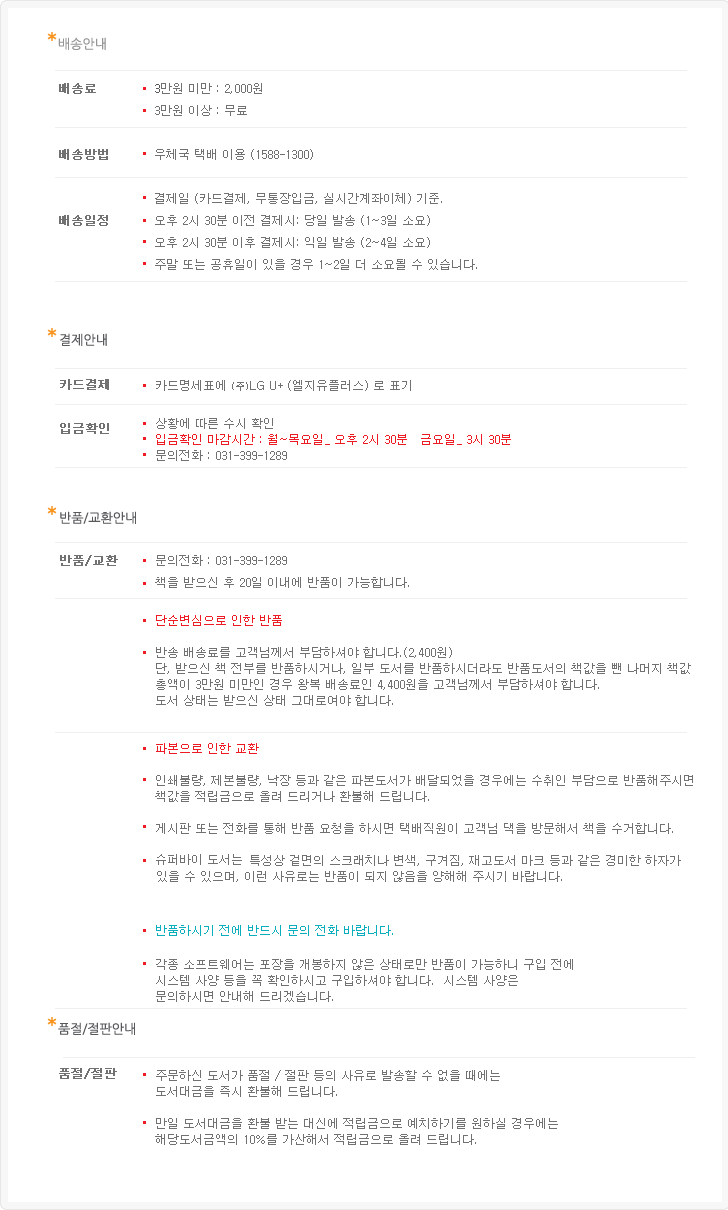|
|
|
|
|
|
|

| 최근 이 책을 구매하신 다른 회원의 책장 |
|
 |
|
|
|
[ 책 소개 ]
Harper Collins의 Let's-Read-and-Find-Out Science시리즈는 과학의 기본개념을 알기 쉽게 소개하며 어린 아이들의 과학, 기술, 자연에 관한 다양한 호기심과 궁금증을 해결해 줄 수 있는 우수한 어린이 과학도서입니다.
어미 공룡은 알에서 깨어난 아기 공룡을 혼자 생존하도록 방치했을까요? 아니면 정성껏 보살폈을까요? 현재 파충류 중에서 도마뱀과 거북이는 알을 보살피지 않지만, 악어는 적들과 위험으로부터 둥지를 보호합니다. 공룡의 유적 중에서 마이아사우라 화석 발견물은 부모 공룡이 아기 공룡들을 보살폈다는 최초의 증거가 됩니다. 이책은 부모 공룡과 아기 공룡간의 관계에 대한 과학적인 정보를 제공합니다.
[ 서지 정보 ]
Edition: Paperback: 40 pages
ISBN: 0064451623
책 크기: 25cm x 20cm
[ 영문 서평 ]
Book Description
Did dinosaur parents protect their young? Or were the babies left on their own in a world of giants?
In a fresh new look at an always-popular subject, Dinosaur Babies reveals the latest discoveries about the lives of the littlest dinosaurs. Learn how to make your own fossil on the "Find Out More" page!
Annotation
Describes the parenting habits of the Maiasaura, a dinosaur whose way of raising children bore similarities to that of birds.
Library Journal
Gr 2-4-This easy-to-read series entry will be welcomed with deserved delight by young dinophiles. It is primarily a study of Maiasaura or "good mother lizards," whose parenting capabilities have been well documented by field discoveries and museum research under the auspices of Dr. John "Jack" Horner. Soft illustrations in tones of salmon, blues, and lavenders provide vivid visualizations of long-ago landscapes and keep pace with the text as it explains what scientists know about these creatures' nesting and parenting behaviors (with a side look at Oviraptor and a mention of Troodon). Both text and illustrations have been "vetted" by Dr. Horner for accuracy and adherence to his interpretations. The book concludes with instructions for creating a "fossil" egg or bone from eggshells and plaster of Paris. Unfortunately, proper disposal instructions are not provided for any unused portions of the mixture. This title is easier for the read-alone set than Dr. Horner's own Maia: A Dinosaur Grows Up (Museum of the Rockies, 1998), far less demanding than Mark A. Norell and Lowell Dingus's A Nest of Dinosaurs: The Story of Oviraptor (Doubleday, 1999), and a most welcome addition to the ever-popular 567.9s.-Patricia Manning, formerly at Eastchester Public Library, NY Copyright 1999 Cahners Business Information.
School Library Journal
Gr 2-4 This easy-to-read series entry will be welcomed with deserved delight by young dinophiles. It is primarily a study of Maiasaura or "good mother lizards," whose parenting capabilities have been well documented by field discoveries and museum research under the auspices of Dr. John "Jack" Horner. Soft illustrations in tones of salmon, blues, and lavenders provide vivid visualizations of long-ago landscapes and keep pace with the text as it explains what scientists know about these creatures' nesting and parenting behaviors (with a side look at Oviraptor and a mention of Troodon). Both text and illustrations have been "vetted" by Dr. Horner for accuracy and adherence to his interpretations. The book concludes with instructions for creating a "fossil" egg or bone from eggshells and plaster of Paris. Unfortunately, proper disposal instructions are not provided for any unused portions of the mixture. Easier for the read-alone set than Dr. Horner's own Maia: A Dinosaur Grows Up (Museum of the Rockies, 1998), far less demanding than Mark A. Norell and Lowell Dingus's A Nest of Dinosaurs: The Story of Oviraptor (Doubleday, 1999), and a most welcome addition to the ever-popular 567.9s. Patricia Manning, formerly at Eastchester Public Library, NY Copyright 1999 Cahners Business Information.
Kirkus Reviews
paper 0-06-445162-3 A highly accessible entry in the Let's-Read-and-Find-Out Science series that takes a look at baby dinosaurs, primarily maiasaurs and oviraptors. Zoehfeld (How Mountains are Made, 1995, etc.) explains how the current information on the peaceful, lizard-like dinosaurs who sipped from streams over 70 million years ago has been extrapolated from fossils, and that the rest is surmised from studying reptile and bird behavior and habits, which provide scientists with clues as to the nesting, nurturing of, and lives of baby dinosaurs. Hatching from small, oval eggs, the newborns ate berries while one member guarded the nest from meat-eating, nest-raiding predators. The author speculates as to the role of fossilized plants that covered the eggs of the maiasaurs and what the discovery of oviraptor skeletons may reveal about the feeding of the young. Washburn's illustrations take a nonthreatening to the subject, casting the rosy-toned dinosaurs as friendly rather than imposing. (Picture book/nonfiction. 5-8) |
|
|
|
|
 |
제품상제정보 배송/반품/교환 안내 |
|
|
|
Super Buy 도서는 미국 출판사의 재고도서(Remainder Book), 초과출간도서(Excess Inventory), 할인도서(Bargain Books)
등을 직수입해서 정가의 55%~80%를 할인한 가격에 판매하는 제품입니다.
Super Buy 책의 품질은 거의 새 책과 같은
수준이지만, 간혹 커버의 스크래치나 접힘과 같은 하자나, 책 하단의 재고도서 마크가 있을 수 있습니다.
저렴하게 판매하는 Super Buy 제품의 특성상 반품이 되지 않습니다만, 파본인 경우에는 착불로 반품하시면 책값을
환불해드리거나 적립금으로 올려드립니다. (반품 전에 연락 요망)
하프프라이스북에서는 중고도서(second hand book)를 취급하지 않습니다.
|
|
|
 - 등록된 128,139건의 서평이 있습니다. - 등록된 128,139건의 서평이 있습니다.
| 더보기 
|
|
|
|
|
|
|
 |
|
|
|
|
|
|